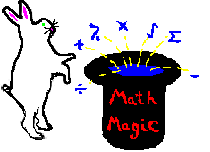

A. When dealing with dice, number sense usually only deals with 1 die or 2 dice, making the probability easy to find.
B. Since 1 die only has 6 sides, the chances of rolling a specific number is only 1/6, because there are only 6 possibilities. When working with 2 dice, there are 36 possible outcomes which is calculated by 62.
C. Below is a chart that will help explain all 36 possible outcomes. On the left will be the sum of the two dice and on the right, in the form of a:b, is a possible combination of 2 dice. The last number in () is the number of different combinations that are possible to reach the sum.
| 2 -> 1:1 (1) | |||||||||||||
| 3 -> 2:1, 1:2 (2) | |||||||||||||
| 4 -> 1:3, 3:1, 2:2 (3) | |||||||||||||
| 5 -> 1:4, 4:1, 2:3, 3:2 (4) | |||||||||||||
6 -> 1:5, 5:1, 2:4, 4:2, 3:3 (5)
| 7 -> 1:6, 6:1, 2:5, 5:2, 3:4, 4:3 (6)
| 8 -> 2:6, 6:2, 3:5, 5:3, 4:4 (5)
| 9 -> 3:6, 6:3, 4:5, 5:4 (4)
| 10 -> 4:6, 6:4, 5:5 (3)
| 11 -> 5:6, 6:5 (2)
| 12 -> 6:6 (1) | |
D. What does this chart show? This chart shows the probability for rolling a particular sum given 2 dice. In other words, the probability for rolling a sum of 8 is 5/36. The probability for rolling a sum of 12 is 1/36. This chart (only the numbers in ()) should be memorized.
1. One easy way to remember these is if the sum is 7 or less, then subtract one from the sum. This is the numerator of the answer.
2. If the sum is greater than 7, you can subtract that value from 14, then subtract one. This is the numerator of the answer.
E. Examples:
Ex [1] A single die is rolled. What is the probability that the number is divisible by 3?
For a problem of this type, we need to know what numbers are divisible by 3. The only numbers that are, are 3 and 6. So we need to add each probability.
The probability you rolled a 3 is 1/6.
The probability you rolled a 6 is 1/6.
1/6 + 1/6 = 2/6 = 1/3.
The answer is 1/3.
Ex [2] A pair of dice are rolled, find the probability that the sum is greater than 9.
For a problem of this type, we need to know the probability for the sums of 10, 11, and 12. (Notice: 9 is not included)
The probability the sum is 10 is 3/36. (Don't reduce)
The probability the sum is 11 is 2/36.
The probability the sum is 12 is 1/36.
Adding these together we get: 3+2+1/36 = 6/36 = 1/6.
The answer is 1/6.
Ex [3] A pair of dice are rolled. Find the probability that the sum is a multiple of 4.
For a problem of this type, we need to know what possible sums there are that are divisible by 4. They are 4, 8, and 12. So we need to add each probability.
The probability you rolled a sum of 4 is 3/36. (Don't reduce)
The probability you rolled a sum of 8 is 5/36.
The probability you rolled a sum of 12 is 1/36.
Adding all of these together we get: 3+5+1/36 = 9/36 = 1/4.
F. There is an interesting phenomenon that occurs when dealing with problems like Ex [3]. If you are looking for the probability that the sum is divisible by a certain number less than 7, then you can use the chart below:
If the sum is divisible by:
|
2 -> the probability is 1/2. | |
|
3 -> the probability is 1/3. | |
|
4 -> the probability is 1/4. | |
|
*5 -> the probability is 7/36. | |
|
6 -> the probability is 1/6, |
Note: 5 is the only abnormal one, making this easy to memorize.